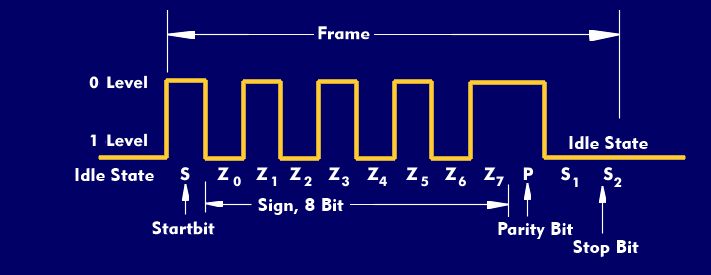asynchronous
In asynchronous transmission, the transmitter and receiver operate without a continuous timing cycle. The receiver generates its synchronization signal at certain time intervals, for example from the asynchronous data format or from self- clocking coding. The timing of the individual operations is not controlled by a central clock.
The asynchronous transmission procedure operates on a character-by-character basis. An additional start bit and stop bit are added to each character to be transmitted. Therefore, this procedure is also called start-stop operation. Synchronization exists only for the duration of a character to be transmitted, whereby each character has its own time grid. There is an asynchronous interval until the next character is transmitted.
A special form of asynchronous data transmission is isochronous. As with asynchronous transmission, the individual characters are transmitted by means of a start bit and stop bit, but the transmission takes place within a fixed time frame. The International Standards Organization( ISO) refers to a transmission process in which there is always a whole number of steps between any two identification times.

